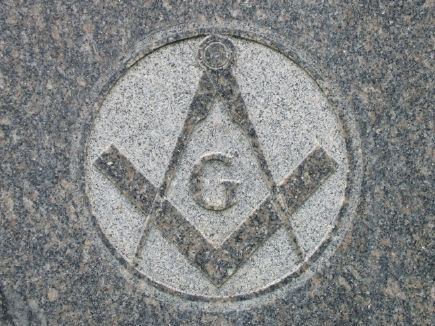 “Benedict crossed the ocean and passed into Gaul, when he made inquiry for masons who could build him a church of stone after the Roman style, which he always loved.” – Saint Bede, Doctor of the Catholic Church and Father of English History
“Benedict crossed the ocean and passed into Gaul, when he made inquiry for masons who could build him a church of stone after the Roman style, which he always loved.” – Saint Bede, Doctor of the Catholic Church and Father of English History
In my search for the beginning origins of freemasonry, my path has led me to a most mysterious and almost forgotten medieval time that seems to be lost in history. It was an era with very little brotherly unity, when various peoples such as the Saxons, Picts, Angles, and other pagan tribes, along with the Celtic Druid Priesthood had held sway in much of what we know today as England, Ireland, Scotland, and France in the 6th, 7th, 8th, and 9th centuries.
This was also the pivotal period in the past when some of these kingdoms, tribes, and members of this same Druid priesthood would make an alliance with the Roman Church to create a new unified Brotherhood called the “Universal Church (Catholic).” This would be the same exact time in history where you will find stone masons (freemasons) that were specifically hired by this new Christian Brotherhood to perform a mass building campaign for the Universal Church across the world.
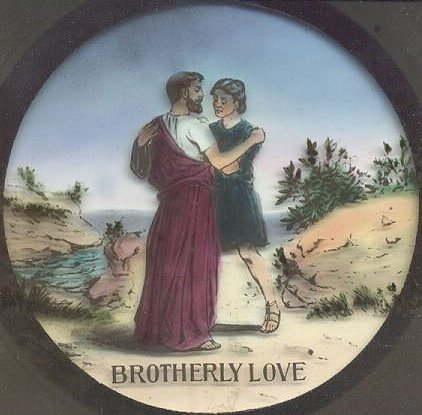 In the course of my research I have found no other evidence of freemasons working inside the Brotherhood or being bestowed with the secret mysteries, because before this time, most builders or stone masons were not true freeman and the previous secret societies had only allowed royal blood to become members of such “Brotherhoods.” This was an ancient customary family practice of the Druids and it was also the same policy of the Romans, and the Egyptians.
In the course of my research I have found no other evidence of freemasons working inside the Brotherhood or being bestowed with the secret mysteries, because before this time, most builders or stone masons were not true freeman and the previous secret societies had only allowed royal blood to become members of such “Brotherhoods.” This was an ancient customary family practice of the Druids and it was also the same policy of the Romans, and the Egyptians.
The facts are that this new Christian Brotherhood would have many secrets and plans that they would need to conceal in the darkness from outsiders or enemies. In order to accomplish this, they would have to develop a system of CHAO to protect these secrets from even their own hired craftsman such as the Merovingian stone masons, that I will discuss in more detail below.
Simply put, these stone masons would be set with the task to build many churches around the world where they would often spend years working along side these priests, bishops, and monks. To enter into such a secret Brotherhood with so much on the line (the world and world peace), there would be many secrets and secret oaths that would need to be protected. The penalty for breaking these oaths would be death, and nothing less.
KING OF BRITAIN DONATES LAND TO BUILD THE CHURCH OF SAINT PETER AND SAINT PAUL
In order to honor the union of the Celtic Druid Church and the Roman Church, in the year 674, King Ecgfrid (Alchfrid), son of King Osuiu (Oswin), had given a gift to this new Brotherhood of seventy “hides or families” of land (60-120 acres) at the mouth of the River Wear on which to build the monastery known today as Wearmouth-Jarrow. This is when the Anglo-Saxon brotherhood had established the first monastery of the blessed Saint Peter, the chief of the apostles to be built after he was declared rock of the Catholic Church in 666 AD. Shortly thereafter in 681 AD, a sister monastery would be added and dedicated to the blessed Saint Paul that was a church built of stone, which Saint Bede (Beda) calls “opus egregium.”
Saint Bede tells us “that mutual peace and concord, mutual and perpetual affection and kindness, should be continued between the two places; so that, (for the sake of illustration,) just as the body may not be severed from the head by which it breathes, nor may the head forget the body, without which it has no life,—in like manner no one should attempt in any way to disturb the union between these two monasteries.” And Saint Ceolfrid had said this of the occasion, “Saint Benedict Biscop completed and ruled the monastery of St. Paul’s seven years and afterwards ably governed…….the single monastery of St. Peter and Paul in its two separate localities.”
Below is a picture of the oldest known dedication stone found in an English church. It is no coincidence that this mason stone happens to come from the the monastery of St. Paul that was built by the first Brotherhood of christian kings, priests, and Merovingian stone masons. This original 1,300 year old dedication stone was actually cemented onto the wall of St. Paul’s that records this event in Latin. Hence, more evidence of the actual beginnings of a secret Christian Brotherhood that has all the mason marks written in stone which dates April 23, 685, that may soon be the date where it is agreed as the true origins of freemasonry.
DEDICATIO BASILICAE
SCI PAUL VIIII KL MAI
ANNO XV EFRIDI REG
CEOLFRIDI ABB EIUSDEM
Q ECCLES DO AVCTORE
CONDITORIS ANNO IIII
This translates as: The dedication of the basilica of St. Paul on the 9th day before the Kalens of May in the 15th year of King Ecgfrith and in the fourth year of Abbot Ceolfrith founder, by God’s guidance, of the same church.
NORTHRUMBIAN KING EDWIN MARRIES A MEROVINGIAN PRINCESS AND IS BAPTIZED BY ST. PAUL AS A CHRISTIAN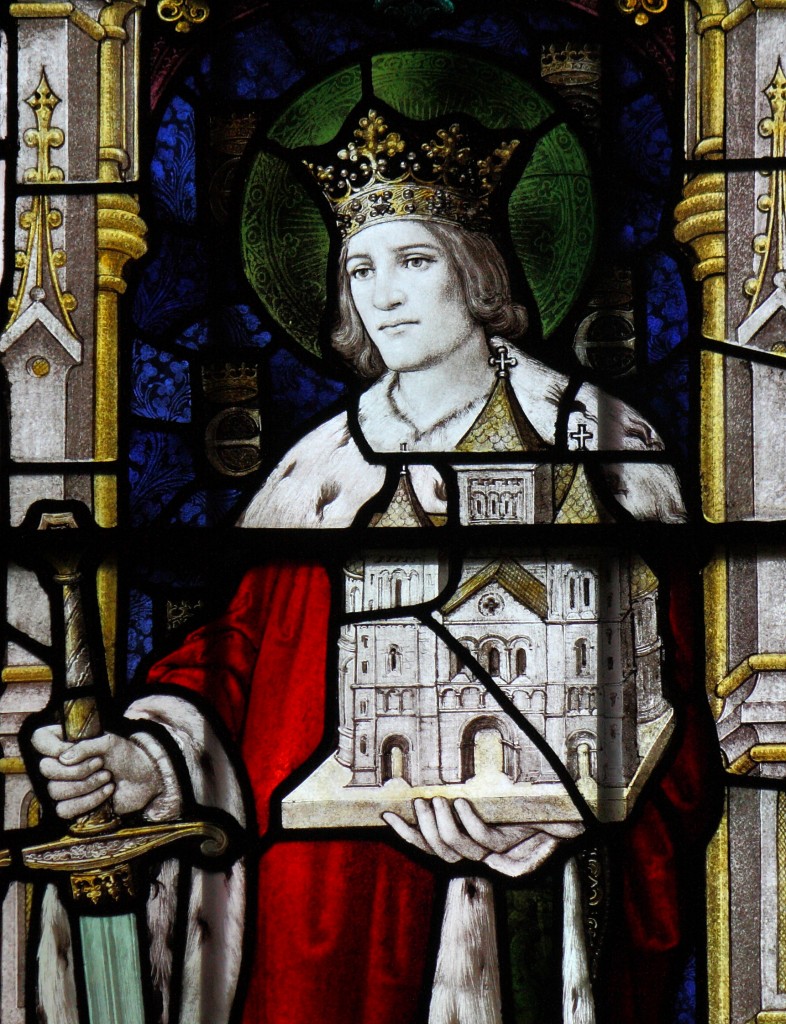
Saint Paul, or Paulinus (died 10 October 644), was a Roman missionary and the first Bishop of York. Saint Paul was instrumental in preaching Christianity throughout the Kingdom of Lindsey and he had also converted the King of Northrumbia, Edwin to Christianity, who he then baptized at York on the date of Easter in the year 627.
In 1866, Roman Stones with the writing below were found at the monastery of St Paul’s, that signifies this event;
`The Barbarians were scattered
and the province of Britain freed.
A boundary was established
between the two oceans
a distance of 80 miles….’
The Kingdom of Northrumbia would be instrumental for the Brotherhood since they were the Northern branch of the large Celtic tribe known under many names such as the Umbri from Italy, who I believe were also the Druids, Etrurians, Cimmerii, Cimbri, or Cumbri, who are said to have settled in these areas of the world 1,500 years before the building of Rome. It is these people I also believe were known as the Phoenicians or Greeks.
The Christian conversion of King Edwin of Northrumbia by Paulinas would bring a very formidable world wide tribe and army into the church fold. According to Bede, Edwin’s kingdom had included the former Roman cities of York and Carlisle. Hence, the reasons why he was canonized as a Saint and also held in such high esteem by the Brotherhood, that they would forever honor his great work by dedicating one of their first stone churches built by masons in England to his honor.
At this time, King Edwin was already aligned with King Eadbald of Kent and to further strengthen these bonds, they would need to join their blood in union with one another through arranged marriages. King Eadbald was the son of King Æthelberht and his wife Bertha, a daughter of the Merovingian King Charibert. The Merovingian kingdom included Rheims and Paris in which they had controlled for centuries and which had momentarily ended with the Carolingian line.
King Eadbald who was already a Christian at the time had agreed to marry the sister of Edwin only if the then pagan king would also agree to convert to Christianity. With the help of Paulinas (St. Paul), King Edwin would agree to become a member of the Brotherhood and was then baptized (anointed) a Christian. He would further cement this Christian bond in blood by marrying Eadbald’s Merovingian sister who was named Æthelburh (Saint Æthelburh Ethelburga, Ædilburh and Æthelburga (Old English: Æþelburh). Now the English Kingdom would be aligned with the French Merovingians.
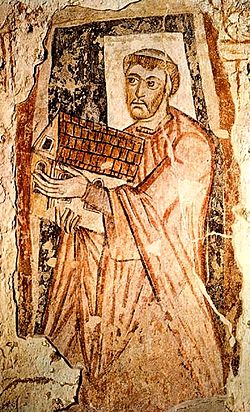 BENEDICT BISCOP TRAVELS TO GAUL AND BRINGS BACK STONE MASONS AND WINDOW GLAZIERS
BENEDICT BISCOP TRAVELS TO GAUL AND BRINGS BACK STONE MASONS AND WINDOW GLAZIERS
In order to properly build churches that would last the test of time and also to lavishly decorate these buildings, the Brotherhood would need specialty craftsman. They needed experts who not only would build just these two English monasteries, but also hundreds more around the world. The goal of the Brotherhood was to have priests and masons in every town and language so that they could convert people and whole countries to Christianity.
This is the time when Biscop had traveled to Gaul (modern day France) in order to hire stone masons and window glaziers so that they could construct these new magnificent churches properly. Not only was their goal to build churches that lasted the test of time, they would also need to be built in order to not only please the new Brotherhood, but also their hard to please new pagan clientele as well as honor the new Christian religion at the same time. After all, the Catholic Church is a Universal Religion comprised of many various ancient pagan cults, pagan kings, pagan kingdoms, and pagan rites that were essentially Christianized or should we say “made humane and less hedonistic.”
Saint Bede describes this event in the book, The historical works of the venerable Bede;
“After an interval of not more than a single year from the foundation of the monastery, Benedict crossed the ocean and passed into Gaul, when he made inquiry for masons who could build him a church of stone after the Roman style, which he always loved. These he obtained, and brought them home with him; and such zeal in the work did he exhibit—out of his love for the blessed Peter, to whose honour he was doing this—that in the course of one year from the time when the foundations were laid, the church was roofed over, and within it you might have witnessed the celebration of masses.
When the work was drawing to its completion, he sent messengers to Gaul to bring over glassmakers (a kind of workman hitherto unknown in Britain) to glaze the windows of the church, and its aisles‘ and chancels. And so it happened that when they came they not only accomplished that particular work which was required of them, but from this time they caused the English nation to understand and learn this kind of handicraft, which was of no inconsiderable utility for the enclosing of the lamps of the church, or for various uses to which vessels are put. Moreover this religious trader took care to import from the regions beyond the sea, if he could not find them at home, whatever related to the ministry of the altar and the church, and to holy vessels, and vestments.”
These craftsman from Gaul (France) were said to be Merovingian and their skills in stone and glass were well regarded by the Brotherhood. Now that the “Ruler of Britain” was essentially aligned with the rulers of France, the Merovingians, hiring and also keeping an eye on these stone masons would be much easier with this British and French alliance in Paris.
These French masons were known for their opus gallicum (Latin for “Gallic work”). This was a technique where precise holes were created in stone masonry for the insertion of wooden infrastructure. These building techniques are mentioned in Julius Caesar’s De bello Gallico and they were used extensively in church architecture. In addition, I believe both Bede and Biscop were actually the Irish and English kin of these Merovingians from France. They were all Umbri, Druids, and Phoenicians. Hence, they were distant cousins who united under the banner of the new Universal Brotherhood in order to build these Catholic Churches around the world.
After King Edwin’s death at the Battle of Hatfield Chase in 633, the Merovingian Queen Æthelburh had fled to Kent, with Paulinus, the Bishop of York and her daughter, Eanfled. She then established one of the first Benedictine nunneries in England, at Lyminge, near Folkestone, Kent. There she served as abbess and taught medicine to women, healed and tended to the sick.
The royal sons of the British King Edwin and Merovingian Queen Æthelburh were sent to Paris, France, in order to be cared for by King Dagobert where they would be educated. Unfortunately, after only a short time in France, they would both die at a young age.

Moe is the founder of GnosticWarrior.com. He is a father, husband, author, martial arts black belt, and an expert in Gnosticism, the occult, and esotericism.

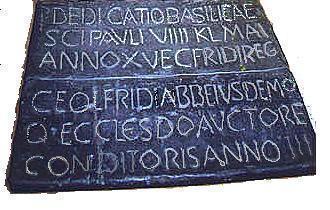
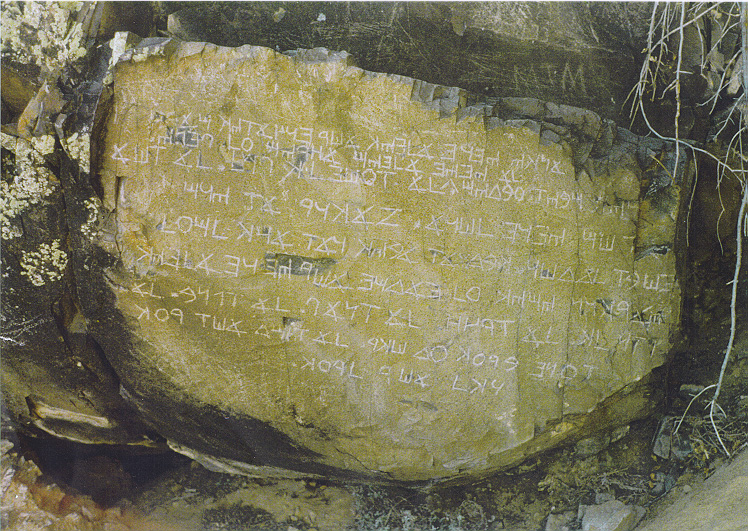

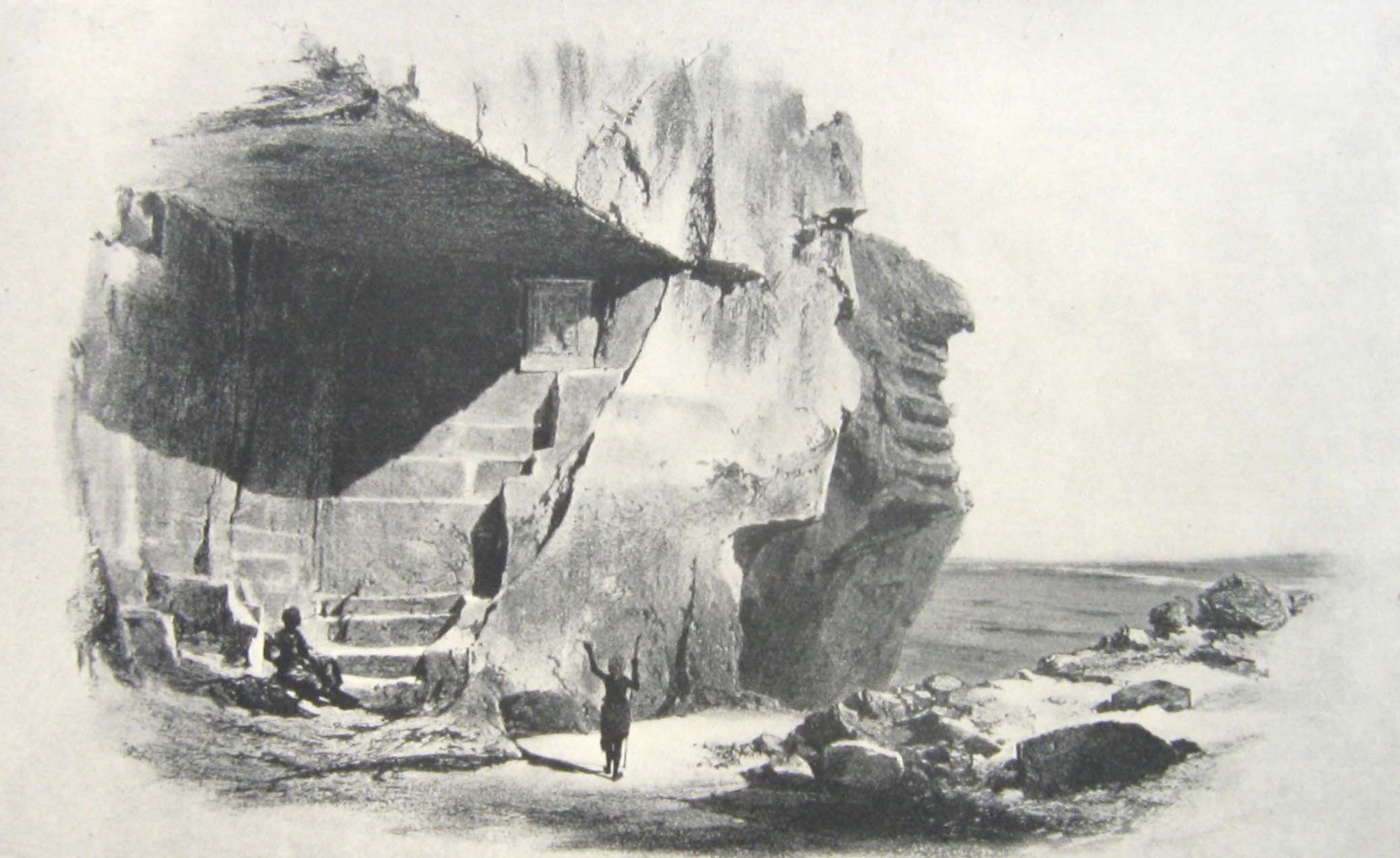
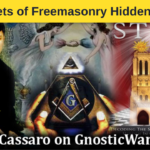
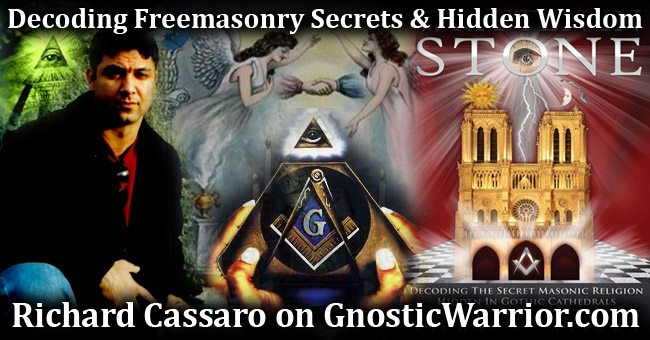
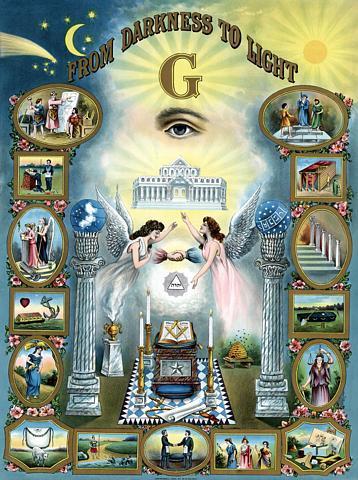
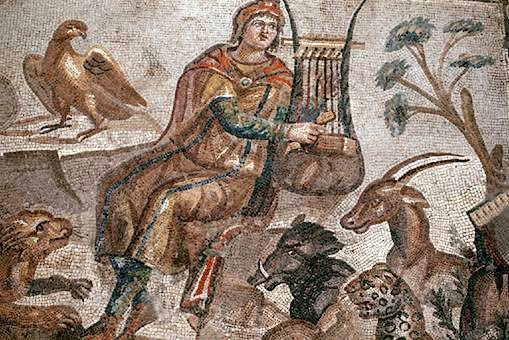
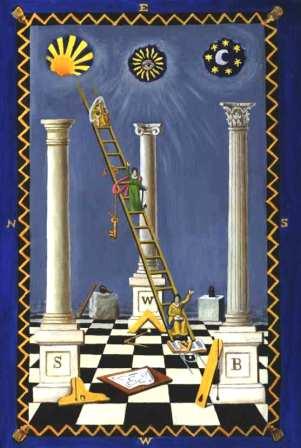
Please kindly assist me,to Join Illuminati Brotherhood/Secret Society june 2014.post comments start.